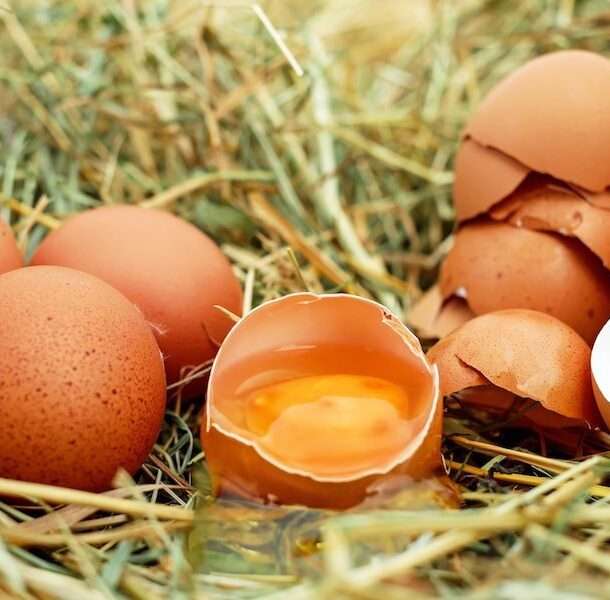

Did y’all see last week’s Instagram post about how pregnant women SHOULD be eating wild caught fish and seafood? Today I’m going to expand on that with Part Four of my Superfoods for Fertility Blog Series: Wild Caught Fish and Seafood. Not only should pregnant women be eating fish and seafood, but women (and men!) TRYING to get pregnant should too!
If you’d like to catch up, Part One of the Superfoods for Fertility blog series was all about about Chia Seeds, Part Two explained why Maca Root is awesome, and Part Three explained all things Egg Yolks.
Molluscs – specifically oysters, clams, and mussels – are nutrient-dense foods that featured widely in the diet of early humans. Diets from back in the day had a best-practice that translates into modern diets – consuming the whole animal. Organ meat in animals is rich in important fat soluble vitamins, minerals, and other important nutrients, so consuming shellfish makes this practice rather easy. The same can be said about wild-caught fatty fish – consume the whole fish to ensure you are getting everything that the fish has to offer.
You know that old wive’s tale about oysters being an aphrodisiac? Well, good news! Recent studies have shown that shellfish – particularly oysters – are high in rare amino acids that trigger increased levels of sex hormones in both men and women that help to improve libido!
The obvious answer – all of those essential fatty acids! Loading up on these EFAs allows for increased blood flow to reproductive organs and may help to regulate your reproductive hormones as well. Omega-3 fatty acids can increase cervical mucus, promote ovulation and overall improve the quality of the uterus by increasing blood flow to the reproductive organs. Omega-3’s are also anti-inflammatory, therefore helping to reduce inflammation in the body which can be a mega fertility downer. It’s especially important to reduce inflammation in the pelvic area for healthy fertility.
Beyond the EFAs that fish and seafood provide, they are chockablock full of Vitamin D. For women looking to get pregnant, Vitamin D is of particular importance as several studies indicate that low levels of vitamin D may negatively impact fertility. It is not entirely clear how vitamin D is involved in fertility, but researchers suspect that one of the ways it may improve fertility is by making the uterine lining more receptive to pregnancy. Research also indicates that vitamin D plays a role in hormone production, including production of hormones that control reproduction. Another area that vitamin D seems to be extremely important is for women with PCOS or other metabolic imbalances. Researchers suspect that low vitamin D levels may contribute to insulin resistance and other hormonal imbalances that cause infertility in women with PCOS (polycystic ovarian syndrome). They found that women with the highest vitamin D deficiency had the most significant metabolic imbalances. Bottom line is that vitamin D is super important for optimal fertility, and wild caught fish is a fantastic food source.
Another mega important fertility nutrient is zinc. Found in high amounts in oysters, clams, and mussels, zinc is capable of improving sperm quality in men – it has been shown to improve sperm count and motility, therefore improving conception rate. Men who increased their seafood intake improved sperm production significantly.
In women, a zinc deficiency can disrupt your menstrual cycle, and negatively impact egg quality – neither of which is ideal for your fertility health. Because zinc is such a potent antioxidant, it plays a large role in egg quality. A zinc deficiency is also capable of impacting your baby once pregnant – insufficient zinc levels has been associated with birth defects, low birth weight, and impaired immune function.
And a bonus for continuing to eat fish once you’re pregnant, a large body of evidence suggests that maternal consumption of seafood during pregnancy protects their child against mercury-associated impairments in cognitive function, attention, and behavior.
And once you’re little babe is in the world and walking on their own two feet, make sure you introduce fish and seafood into their diet early on. The long-chain omega-3 fats EPA and DHA, selenium, zinc, and highly absorbable protein is vital to proper brain development in children.
Wild caught salmon has:
Just six medium oysters provides:
One thing to keep in mind when upping your intake of fish and seafood — focus on eating seafood species lowest in mercury. These include anchovies, sardines, clams, scallops, North Atlantic mackerel, halibut, herring, and salmon. Conveniently, many of these species are also highest in the beneficial omega-3 fats EPA and DHA. And also be sure to AVOID high-mercury options: yellowfin and canned albacore tuna, Spanish and king mackerel, Chilean sea bass, marlin, orange roughy, shark, swordfish, tilefish and bigeye/ahi tuna. If you eat bpa-free canned tuna, stick to light or skipjack tuna, and limit it to less than two servings a week.
Make safer sushi choices. Popular sushi fish are often the apex predators of the food chain, so they tend to be high in mercury. When trying to get pregnant (and also during pregnancy and nursing), you can reduce mercury exposure from sushi by holding back on all types of tuna, mackerel, sea bass, and yellowtail. Fish and shellfish like eel, salmon, crab, and clam are lower in mercury.
Studies have shown a direct correlation between high levels of mercury and fertility issues. What’s more worrisome: mercury is stored in the body – so even if you’re careful to follow the guidelines for fish consumption while you’re pregnant, your baby-to-be could still be harmed by the mercury you ingested preconception.
For optimal fertility nutrition, aim to consume fresh wild caught seafood 2-4 times per week, with a focus on salmon, sardines, anchovies, mollusks, and shellfish. Always be sure that you are purchasing WILD-CAUGHT fish. You have unlimited options when it comes to how to choose to consume your fish and seafood, but I want to share one of the easiest fish recipes that I make regularly at home. Not only does it contain one of my fav wild-caught fatty fish – halibut – but it also has plenty of coconut – in oil and milk form! You all know how I feel about coconut and how incredible it is!
4 (4-oz) wild caught halibut filets
1 tsp minced garlic
½ chopped onion
¼ cup of raw and unrefined coconut oil
½ red pepper, sliced into strips
1-2 tbsp curry powder or prepared red curry paste
1 can of unsweetened organic coconut milk (bpa-free, no guar gum)
½ cup of toasted sesame seeds
1 tsp Celtic Sea Salt
Saute the garlic and onion in 1 tbsp coconut oil. Add red pepper strips and continue to saute lightly. Add remaining coconut oil and blend in curry powder or paste to taste. Add coconut milk and simmer on medium heat. Coat fish with sesame seeds and salt, then grill or broil (do not overcook). Top fish with sauce, serve over spaghetti squash or kelp noodles with plenty of fresh veggies. Bon appetit!
The biggest fertility boost from fish comes from all of those essential fatty acids! EFAs increase blood flow to reproductive organs and may help to regulate your reproductive hormones. Omega-3 fatty acids can increase cervical mucus and promote healthy ovulation. Fish is also chockablock full of Vitamin D (studies show that low levels of vitamin D can negatively impact fertility) and zinc (which plays a huge role in egg quality).
Studies have shown a direct correlation between high levels of mercury and fertility issues, making it important to focus on eating seafood species lowest in mercury. You can reduce mercury exposure by refraining from tuna, mackerel, sea bass, and yellowtail.
Aim to consume low-mercury, fresh, wild-caught seafood 2-4 times per week, with a focus on wild-caught salmon, sardines, anchovies, mollusks, and shellfish.
The Fertility Code is the best-kept secret of women who want to take the guesswork out of conceiving, and give themselves every possible chance of getting, and staying, pregnant successfully.
Bringing together a personalized & custom approach, evidence-based information, science-backed protocols, and nurturing practices, this course is for anyone who is struggling to get pregnant, or thinking about getting pregnant soon. The course is a one-stop-shop for getting your body, mind and soul prepared for conception.
In less than 3 months, you will learn exactly what you need to do now to get pregnant successfully and have a healthy full term pregnancy with The Fertility Code.
Sarah Jane Sandy is a certified nutrition therapist, and a fertility and women’s health expert. She has helped hundreds of women increase their fertility naturally and go on to have healthy full-term pregnancies. She has been working with women and couples trying to get pregnant for over 16 years and over 90% of the women who work with her get pregnant and have healthy babies.
She also works with women trying to fix their hormone imbalances, as well as supporting women through pregnancy and the postpartum period. Learn more about her own fertility and hormone journey here. To send Sarah a message, complete her Contact Form.




Curious about your fertility health? Take this simple quiz to find out what factors may be harming your fertility, and learn what you can do about it!